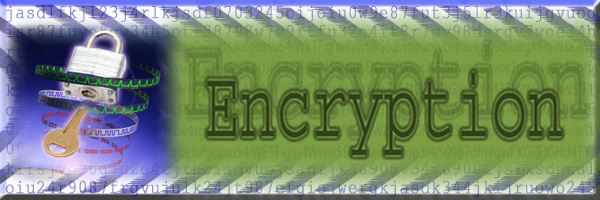
Encryption Algorithms
- RSA - It was created in 1977 as a method
of encryption. Three mathematicians -- Ron Rivest, Adi Shamir and Len Adleman,
gave an example of how to put it into practice. This is curretly the most
popular public key encryption method.
- DES/3DES (Data Encrpytion Standard) - This
was developed in 1977 by the US government as the standard encryption method,
often times used in ATMs and in UNIX systems. This is a block cipher using
56-bit encryption. 3DES is an advanced form of this, as DES is often no longer
considered secure, and can have a key size of up to 168 bits.
- Blowfish - This is also a symmetric block
cipher. This has a key size that varies from 32-448 bits, meaning it can be
exported freely (as up until recently anything above 40 bit encryption was not
exportable and considered on the same level as weapons when it comes to
exportation). It was introduced in 1993 and is becoming more and more
accepted.
- IDEA (International Data Encryption
Algorithm) - This was developed in the early 1990s by Dr. X. Lai and Prof. J.
Massey in Switzerland. It uses 128-bit encryption 8 bits at a time. It is very
difficult to crack by brute force, and due to its implementation in chips, it
is also fast.
- SEAL (Software-optimized Encryption
Algorithm) - This was developed by Rogaway and Coppersmith in 1993. It is a
stream cypher (encrypting continuously), which is faster than block cyphers
but takes longer to initialize. It uses 160-bit encryption.
- RC4 - This was invented by Ron Rivest and is
used in Lotus Notes and Netscape. It can go up to 2048 bits (256 bytes) and
uses random bytes and the XOR logic command to encrypt text. Each encrypted
message uses a different key.
- ElGamal - This is an asymmetric key
algorithm. This system was described by Taher Elgamal in 1984. It has three
components, the key generator, the encryption algorithm, and the decryption
algorithm. It is pretty vulnerable to a chosen-plaintext attack. The
Cramer-Shoup system based on it is more secure in this respect.
- AES (Advanced Encryption Standard) - It is
also known as Rijndael, made from a combination of the developers' last names.
It was developed by Joan Daemen and Vincent Rijmen. This was adopted as the
current US government's standard in 2001. It is a symmetric block cipher than
can support key lengths of 128 bits, 192 bits, and 256 bits.
Next Page
--->
Main Page

